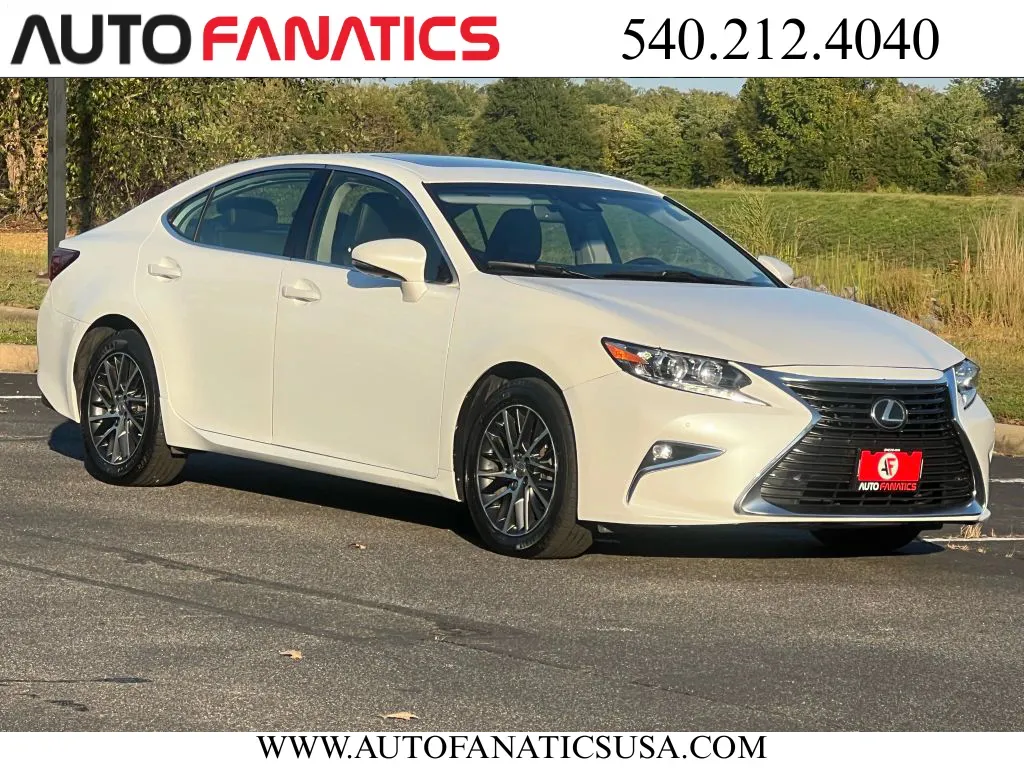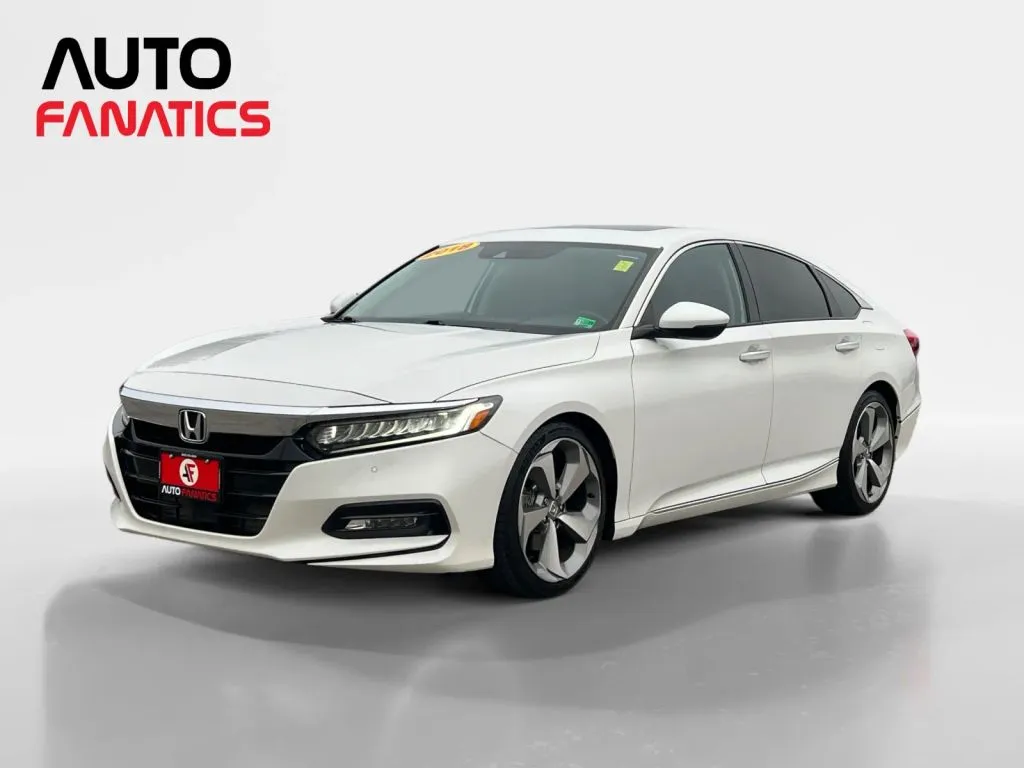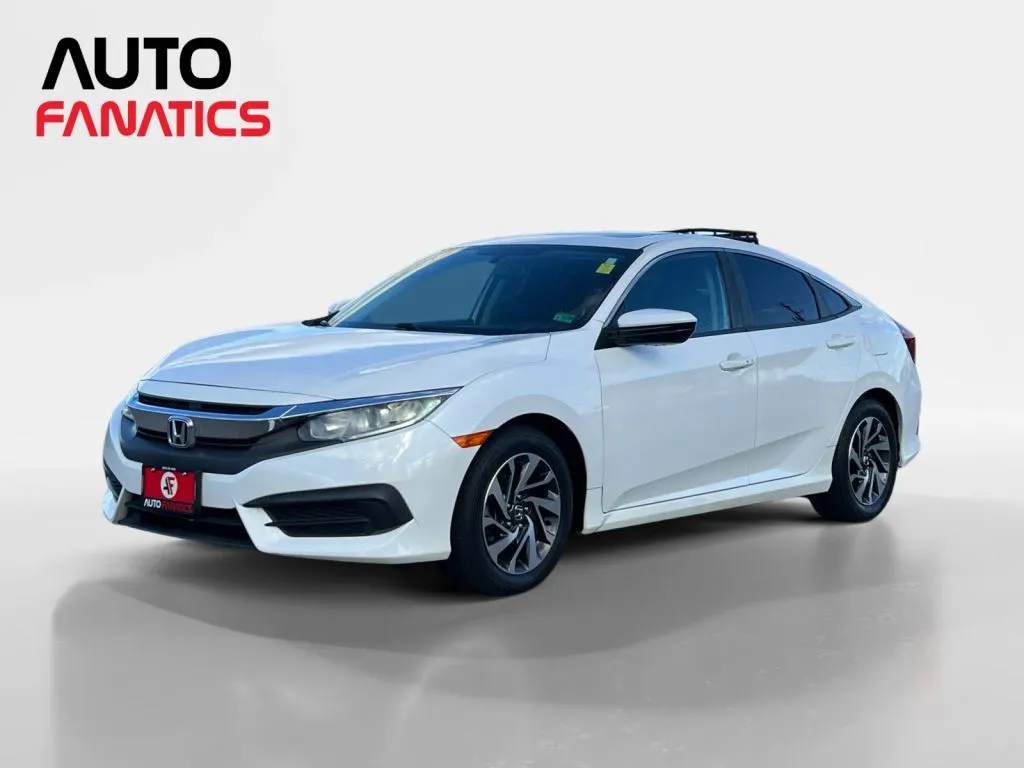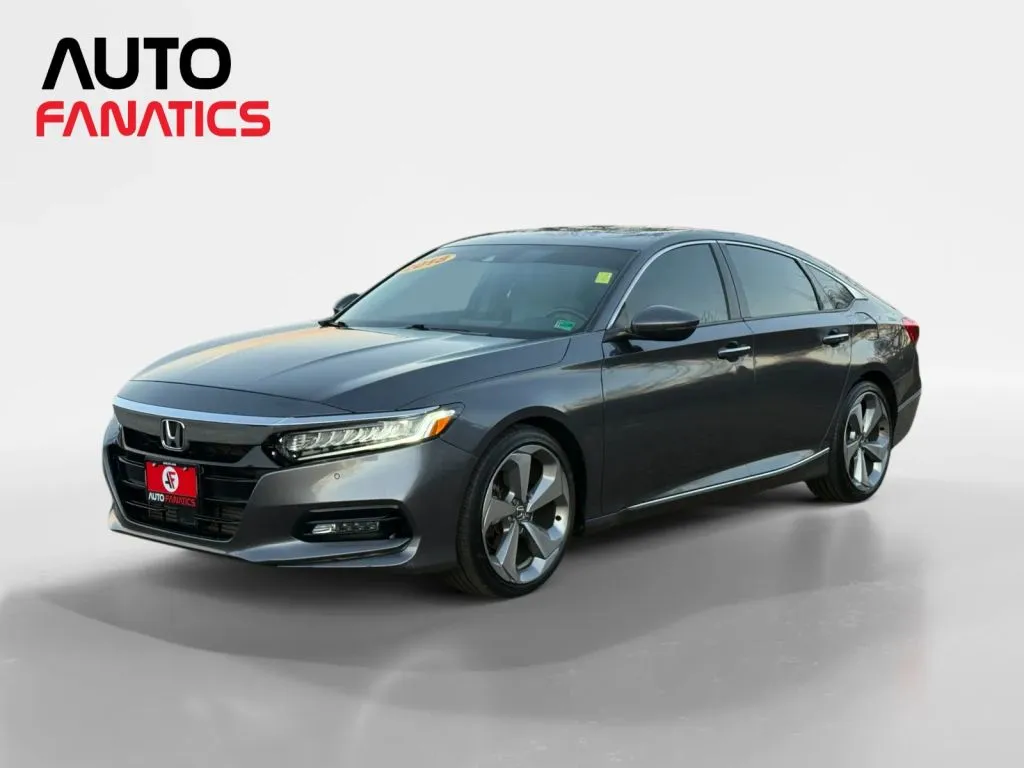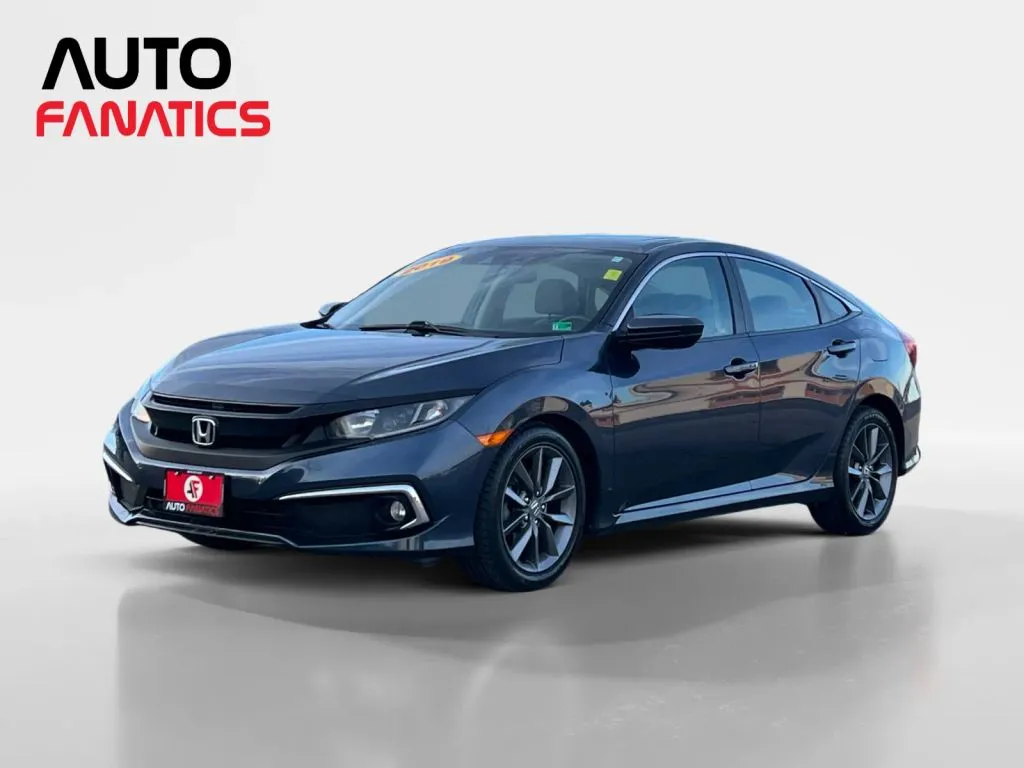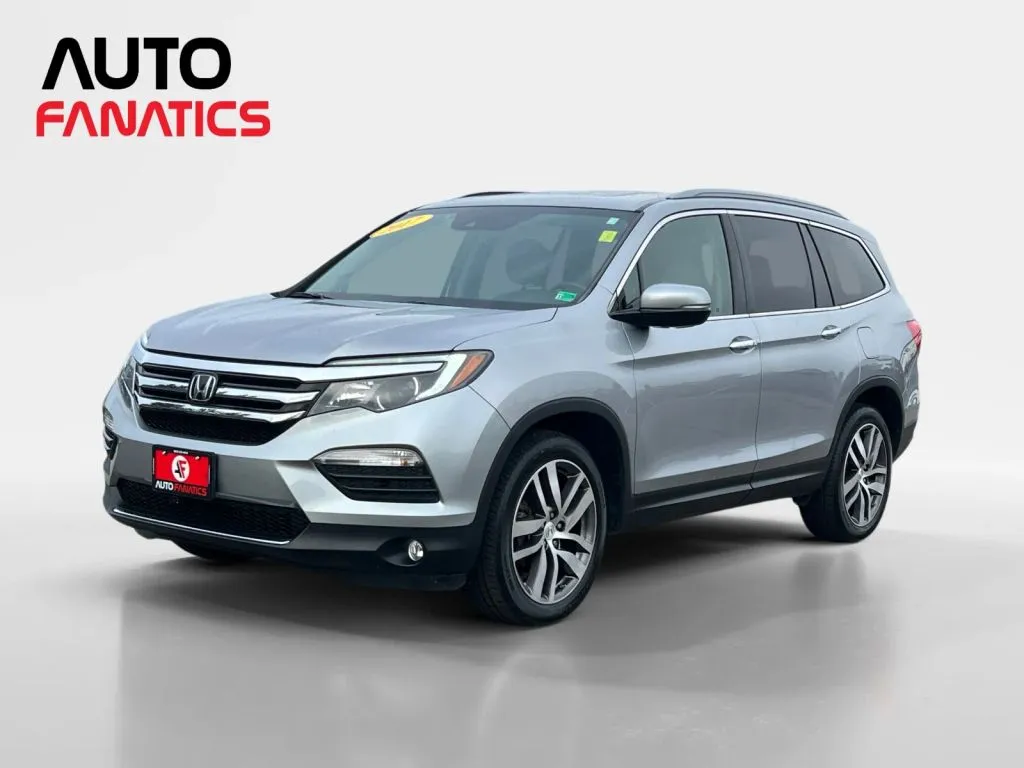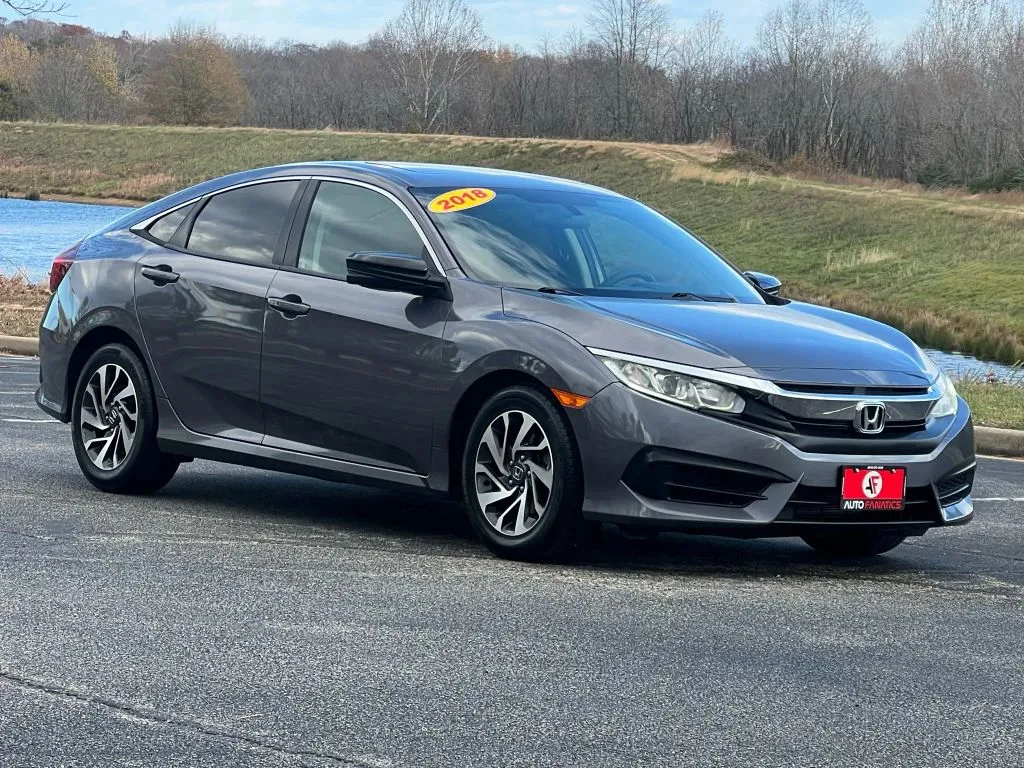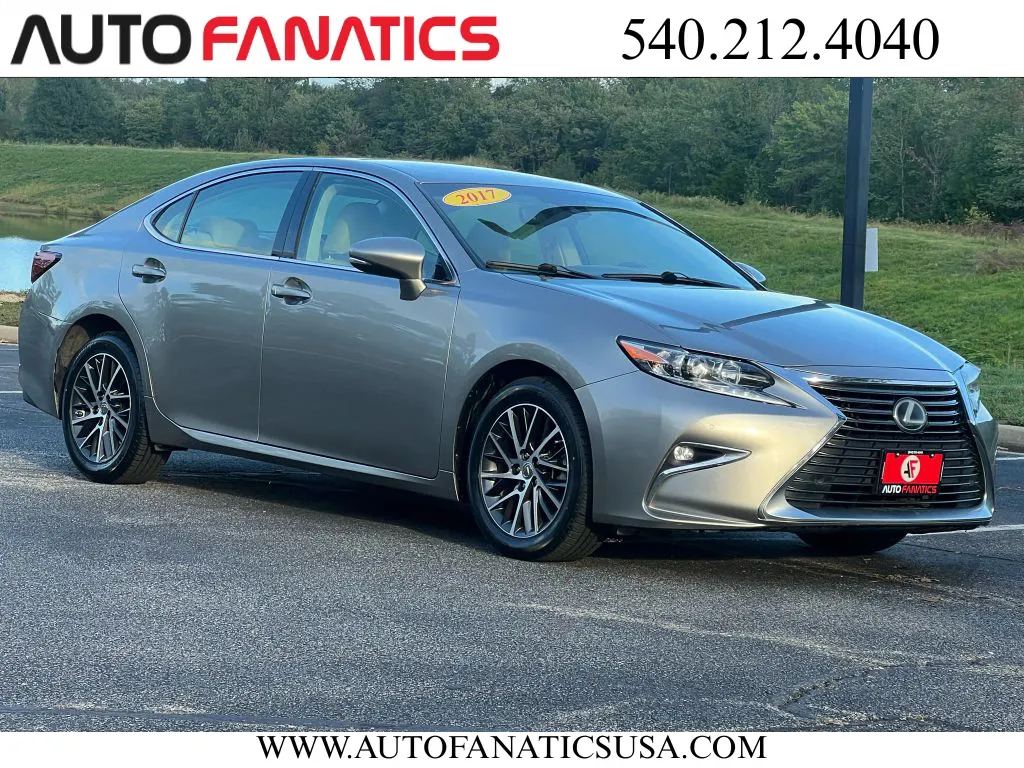Car Financing Calculator: A Complete Breakdown
Walking into a dealership without a clear budget can feel like going grocery shopping while you’re hungry—everything looks good, and you’re likely to overspend. When it comes to a major purchase like a vehicle, that’s a risk you don’t want to take. The key to a confident and successful car-buying journey is preparation. Before you even start browsing our inventory, using a car financing calculator can give you a powerful advantage. This simple online tool helps you understand how factors like your down payment, loan term, and interest rate will shape your monthly payment. It puts you in the driver’s seat of your finances, which is a core part of the transparent, five-star experience that has earned us over 500 positive reviews from your Fredericksburg neighbors.
Key Takeaways
- Plan Your Payment, Then Pick Your Car: Use a car loan calculator to establish a comfortable monthly payment before you start shopping. This empowers you to search for vehicles within a realistic budget, ensuring you find a car that truly fits your financial life.
- Adjust the Levers to Find Your Fit: Experiment with different down payments, loan terms, and interest rates to see how they impact your costs. This helps you find the perfect balance between a manageable monthly payment and the lowest total interest paid over time.
- Factor in the Extras for a True Estimate: The sticker price is just the starting point. For the most accurate picture, always include additional costs like sales tax, fees, and your trade-in value to understand the final loan amount and avoid surprises.
What is a Car Loan Calculator?
Think of a car loan calculator as your financial co-pilot for buying a car. It’s a simple online tool that helps you estimate what your monthly car payment might be and how much you’ll pay in total over the life of the loan. Before you even start browsing for your next vehicle, you can use a car loan calculator to get a clear picture of your budget. By plugging in a few key numbers—like the vehicle’s price, your down payment, an estimated interest rate, and the loan length—you can see how different scenarios would impact your wallet. This simple step takes the guesswork out of financing and puts you in the driver’s seat. It’s all about giving you the information you need to make a confident and smart decision, which is a core part of the transparent, no-pressure experience we’re known for here in Fredericksburg. Having this estimate helps you understand the full financial picture, not just the sticker price. It transforms a potentially stressful process into a manageable one, ensuring you feel prepared and in control. This tool is your first step toward finding a great used car that fits comfortably within your means, aligning perfectly with our goal to provide a five-star experience from start to finish.
How Does It Work?
Using a car loan calculator is straightforward. You start by entering the price of the car you’re interested in. Then, you’ll add details like your down payment amount and the value of any vehicle you plan to trade in. The calculator uses this information to determine the total amount you need to borrow. Next, you’ll input an estimated interest rate (APR) and the loan term, which is the number of months you’ll have to pay it back. The tool then runs these numbers through a standard loan formula to give you an estimated monthly payment. Many calculators also let you include local sales tax and other fees for an even more precise estimate, showing you exactly how each variable shapes your potential payment.
Why Use One Before You Shop?
Walking into a dealership with a clear understanding of your budget is one of the smartest moves you can make. Using a car loan calculator beforehand empowers you to do just that. It allows you to experiment with different numbers from the comfort of your home, so you can see how a larger down payment or a shorter loan term affects your monthly costs. This preparation helps you set a realistic price range for your search and prevents you from falling in love with a car that’s outside your financial comfort zone. When you know what you can afford, you can shop with confidence and focus on finding the right vehicle. Once you have a budget in mind, the next logical step is to get approved for financing.
What Numbers Do You Need for a Car Loan Calculator?
A car loan calculator is an amazing tool for planning your budget, but it’s only as accurate as the information you give it. Before you start plugging in numbers, it helps to have a few key details ready. Gathering these figures will give you a much clearer picture of your potential monthly payment and the total cost of your next vehicle. Think of it as creating a financial map before you start your car-buying journey. Let's walk through exactly what you'll need.
Vehicle Price & Down Payment
First up are the two biggest numbers: the price of the car and the cash you plan to put down. The vehicle price is your starting point—it’s the sticker price of the car you have your eye on. Feel free to browse our used cars in Fredericksburg, VA to get a realistic idea of costs. Next is your down payment. This is the money you pay upfront, and it directly reduces the amount you need to borrow. The larger your down payment, the smaller your loan will be, which can lower your monthly payments and save you money on interest over time.
Interest Rate (APR)
Your interest rate, or Annual Percentage Rate (APR), is one of the most critical factors in your loan calculation. The APR represents the true cost of borrowing money because it includes the interest rate plus any lender fees. This number is largely determined by your credit score and financial history. A higher credit score typically gets you a lower APR, which means a lower monthly payment. The best way to get a solid estimate of your potential rate is to get pre-qualified before you shop. This gives you a real-world number to work with in the calculator.
Loan Term
The loan term is simply the amount of time you have to repay the loan, usually expressed in months. Common loan terms are 36, 48, 60, 72, or even 84 months. There’s a trade-off here to consider. A longer term, like 72 months, will result in a lower monthly payment, which can be easier on your budget. However, you’ll end up paying more in total interest over the life of the loan. A shorter term means higher monthly payments, but you’ll pay the car off faster and save on interest. The calculator lets you toggle between different terms to find a balance that works for you.
Trade-In Value
If you have a car you’re planning to part with, its trade-in value can make a big difference. Think of your trade-in as another form of a down payment. The dealership will apply the value of your old car directly to the price of your new one, reducing the total amount you need to finance. This is a fantastic way to lower your loan principal from the get-go. You can get a quick and accurate estimate of what your current vehicle is worth by using a tool to value your trade. Just plug that estimated value into the calculator to see how it impacts your numbers.
Taxes & Fees
Finally, don’t forget about the extra costs. The sticker price isn’t the final price. You’ll also need to account for things like state sales tax, documentation fees (for all the paperwork), and title and registration fees. These costs can add up, and they’re often rolled into the total loan amount if you don’t pay them upfront. Forgetting to include them in your calculation can lead to a surprise when you see the final numbers. Adding a realistic estimate for taxes and fees into the car loan calculator will give you the most accurate preview of your actual monthly payment.
How Each Variable Affects Your Payment
Once you have your numbers, you can start plugging them into a car loan calculator and see how they work together. Think of it like a seesaw—when one number goes up, another might come down. Understanding this relationship is the key to finding a payment plan that fits your life without stretching your budget too thin. It puts you in control of the conversation, whether you're adjusting your down payment or deciding on the length of your loan. Let’s break down how each piece of the puzzle influences your final monthly payment.
The Impact of Your Interest Rate
Your interest rate is essentially the cost of borrowing money. A lower rate means you pay less in interest over the life of the loan, which translates to a lower monthly payment. When you compare offers, always look at the Annual Percentage Rate (APR). The APR is the true cost of borrowing because it includes the interest rate plus any lender fees. A small difference in APR can save you hundreds, or even thousands, of dollars. Getting a great rate often comes down to your credit history, but we work with a network of lenders to help you get approved for the best possible terms.
How a Down Payment Helps
A down payment is the cash you pay upfront for your vehicle, and it directly reduces the amount you need to finance. The more you put down, the smaller your loan will be. This not only lowers your monthly payment but can also help you secure a better interest rate from lenders. For a used car, a good rule of thumb is to aim for a down payment of at least 10%. Putting down as much as you comfortably can without dipping into your emergency savings is a smart move that pays off every single month.
Choosing the Right Loan Length
The loan term is how long you have to pay back the loan, typically ranging from 24 to 84 months. A longer term will give you a lower monthly payment, which can be tempting. However, you'll pay more in total interest over time. A shorter term means a higher monthly payment, but you’ll pay the car off faster and save a significant amount on interest. Many financial experts suggest keeping your loan term to 60 months or less if possible. It’s all about finding the right balance between a manageable monthly payment and the total cost of the loan.
Don't Forget the Total Cost
It’s easy to focus only on the monthly payment, but it’s crucial to look at the big picture. The total cost of your loan includes the vehicle price, interest, sales tax, and any dealership fees. A car loan calculator helps you see this complete amount, so there are no surprises down the road. If you have a vehicle to trade in, its value can act like a big down payment, significantly lowering the amount you need to finance. You can easily estimate your trade-in value online to get a clearer idea of your total cost.
Use Your Calculator to Negotiate a Better Deal
A car loan calculator isn’t just for planning—it’s a powerful tool for getting a great deal. When you understand the numbers behind your loan, you can walk into any dealership with the confidence and knowledge needed to secure terms that work for you. It transforms the conversation from what you might be able to afford into what you know you can afford. This preparation is the key to a smooth, stress-free car-buying experience. At Auto Fanatics, we welcome informed buyers because our transparent, no-pressure process is built on finding the right fit for your budget, which is why over 500 customers have left us five-star reviews.
Bring Your Results to the Dealership
Once you’ve used a car loan calculator, you have a clear picture of your financial landscape. You can show exactly how different down payments, interest rates, and loan terms affect your monthly payment. This isn't about confrontation; it's about collaboration. When you can say, "I'm comfortable with a payment around $350, and my calculations show that's achievable with a 60-month term and my down payment," you set a clear, data-backed starting point. This shows you’ve done your homework and helps our team work with you to structure a deal that aligns perfectly with your financial goals, ensuring you drive away happy.
Shop Around for the Best Interest Rate
Your interest rate has one of the biggest impacts on your total loan cost. Don’t just accept the first offer you receive. It’s smart to compare rates from different lenders, including banks, credit unions, and online financiers. Applying for pre-approval from several lenders within a two-week period typically counts as a single inquiry on your credit report, so you can shop for the best APR without a major impact. At Auto Fanatics, we simplify this for you by working with a network of trusted lending partners. You can get approved directly through us, and we’ll help you find the most competitive financing available for your situation.
Find Your Ideal Down Payment
A larger down payment is one of the best ways to lower your monthly payments and reduce the total interest you pay over the life of the loan. For used cars, a common guideline is to aim for a down payment of at least 10% of the vehicle's price. Use your calculator to see how different amounts change your monthly obligation. If you have a vehicle to trade in, getting an estimate of its worth can significantly help. You can easily get your trade-in value on our website to see how it can contribute to your down payment and put you in a stronger financial position.
Get Pre-Approved Before You Go
Walking into the dealership with a pre-approved loan offer is like shopping with cash in hand. It solidifies your budget and shows you’re a serious buyer. Getting pre-approved gives you a benchmark interest rate and loan amount, which you can use to compare against any financing options we offer. This step removes uncertainty and lets you focus on the most important part: finding the perfect car, truck, or SUV. We make it easy to get pre-qualified with Capital One right on our site, so you can know exactly where you stand before you even visit us in Fredericksburg.
Exploring Advanced Calculator Features
A great car loan calculator does more than just estimate your monthly payment. The best tools give you a complete financial picture, helping you understand exactly where your money is going. When you can see the total cost of your loan, including interest, taxes, and fees, you can make a much more informed decision. This level of detail removes the guesswork and helps you budget with confidence.
Using a comprehensive car loan calculator before you even step into a dealership puts you in control. You can experiment with different scenarios to find a payment plan that truly fits your life. It’s about moving forward with clarity, knowing you’ve found a vehicle and a loan that work for you. These advanced features are designed to provide that transparency.
See Your Loan with an Amortization Schedule
An amortization schedule might sound complicated, but it’s really just a detailed breakdown of your loan payments over time. This feature shows you exactly how much of each monthly payment goes toward the principal (the amount you borrowed) versus the interest. In the beginning, a larger portion of your payment covers interest. As you pay down the loan, more of your money goes toward the principal. Seeing this schedule helps you visualize the long-term cost of your loan and watch your balance shrink with every payment.
Include Taxes and Fees for Accuracy
The sticker price isn't the final price, and forgetting about taxes and fees is one of the biggest mistakes buyers make. A thorough calculator will have fields for you to add your local sales tax, documentation fees, and other potential costs. Including these numbers gives you a far more realistic estimate of your monthly payment and the total amount you’ll need to finance. This prevents any surprises when it’s time to sign the paperwork and ensures the payment you budgeted for is the payment you’ll actually have.
Estimate Your Trade-in Value
If you have a car to trade in, its value can act as a significant down payment, lowering the amount you need to borrow. Advanced calculators let you input your vehicle’s estimated trade-in value to see its impact instantly. You can see how much it reduces your monthly payments and the total interest you'll pay over the life of the loan. Before you start shopping, you can get a trade-in value for your current car online and plug that number into the calculator to see how much you can save.
Get a Full Payment Breakdown
When you combine all these features—the vehicle price, down payment, trade-in value, interest rate, taxes, and fees—you get a complete and accurate payment breakdown. This is the true power of a good calculator. It moves beyond a simple monthly estimate to show you the total loan amount and the total cost of borrowing. Armed with this detailed information, you can confidently compare loan offers and walk into the dealership fully prepared. Once you have a clear picture, you can even get approved for financing with a solid understanding of your budget.
Don't Forget These Additional Car Costs
When you’re using a car loan calculator to map out your budget, it’s easy to get laser-focused on the vehicle's sticker price. And while that’s the biggest piece of the puzzle, it’s not the whole picture. To get a truly accurate idea of your total investment and what your monthly payments will look like, you need to account for a few other standard costs. Think of it like budgeting for a vacation—you wouldn’t just budget for the flight; you’d also include the hotel, food, and activities. The same principle applies to buying a car. Factoring in these additional expenses from the start helps you avoid any last-minute surprises and ensures your final monthly payment is one you’re genuinely comfortable with. It’s all about being a prepared and confident buyer. At Auto Fanatics, our no-pressure approach means we’re always upfront about every line item, which is part of why we have over 500 five-star reviews. We want you to feel empowered with this knowledge before you even step onto the lot. Let's break down the most common costs you’ll see beyond the price of the car itself so you can build a complete, realistic budget.
Car Insurance
Before you can drive your new-to-you car off the lot, you’ll need to show proof of insurance. If you're financing the vehicle, your lender will almost certainly require you to carry "full coverage," which typically includes both collision and comprehensive policies. This isn't just a box to check; it protects their investment and, more importantly, it protects you from major out-of-pocket costs in case of an accident, theft, or other damage. Insurance rates can vary quite a bit based on your driving history, the car you choose, and even your zip code, so it’s a great idea to get a few quotes on the specific models you’re considering before you buy.
Doc Fees
"Doc fees," or documentation fees, are a standard charge at most dealerships that cover the cost of processing all the paperwork for your vehicle sale. This includes preparing the title application, sales contracts, and other necessary forms to make everything official. While the fee is common, the amount can vary from one place to another. At Auto Fanatics, we believe in complete transparency, which is why we’re always clear about any fees associated with your purchase. Don’t ever hesitate to ask for a full breakdown of the numbers—a great dealership will be happy to walk you through every charge so you know exactly what you’re paying for.
Optional Protection Plans
While not required, optional protection plans can be a really smart investment, especially when buying a used vehicle. Often called extended warranties or vehicle service contracts, these plans are designed to cover the cost of unexpected mechanical repairs after any factory warranty has expired. This can provide incredible peace of mind, knowing you won't be hit with a sudden, massive repair bill for a major component like the engine or transmission. We offer several plans and can walk you through the different levels of coverage to find one that fits your budget and driving habits, ensuring your investment is protected for years to come.
Title and Registration
Finally, you'll need to account for state and local government fees. These are the costs for titling the car in your name and registering it with the DMV so you can legally drive it on public roads. Think of it as the final step in making the car officially yours. These fees are non-negotiable and vary depending on where you live and the vehicle's value or weight. The dealership will typically handle all the complex paperwork for you and include these costs in your final sales price for convenience. Including an estimate for title and registration in your budget from the beginning ensures you have a clear and accurate understanding of your total out-the-door cost.
Smart Strategies for Using a Car Loan Calculator
A car loan calculator is more than just a tool for crunching numbers—it’s your secret weapon for making a smart, confident purchase. When you know your numbers inside and out, you can walk into any dealership with a clear understanding of what you can afford and what a fair deal looks like. It helps you move from guessing to knowing, which is the key to a stress-free car-buying experience. By taking a few minutes to explore different possibilities, you can map out a financial plan that fits your life perfectly. Think of it as your financial co-pilot, guiding you toward the right car at the right price. Here’s how to put it to work for you.
Compare Different Scenarios
The real power of a car loan calculator is its ability to show you different futures. What happens if you put down an extra $1,000? How does a 48-month loan compare to a 60-month loan in total interest paid? You can answer these questions in seconds. Plug in various down payment amounts, loan terms, and even different interest rates to see how each change impacts your monthly payment and the overall cost. This lets you find the sweet spot between a comfortable monthly payment and the lowest possible long-term cost. It’s like test-driving the financing before you even test-drive the car.
Set a Realistic Budget
It’s easy to fall in love with a car on the lot, but your budget should be set before you start shopping. A good guideline is the 10/20 rule: aim to spend no more than 10% of your monthly take-home pay on your car payment, and no more than 20% on total car expenses (including insurance, gas, and maintenance). Use the calculator to work backward. Figure out the monthly payment you’re comfortable with, and then see what total loan amount that gets you. This simple step helps you narrow your search to a list of quality used cars that truly fit your financial picture.
Compare Multiple Loan Offers
You wouldn’t buy the first car you see, so why take the first loan offer you get? Getting financing is a competitive process, and you’re the customer. Before visiting a dealership, it’s a great idea to get pre-qualified with different lenders, like your bank, a local credit union, and through the dealership itself. Applying within a two-week window typically counts as a single inquiry on your credit report, so you can shop for the best rate without worry. Once you have a few offers, you can compare their Annual Percentage Rates (APRs) and terms to find the one that saves you the most money.
Understand Your Credit Score's Role
Your credit score is one of the biggest factors in determining your loan’s interest rate. A higher score signals to lenders that you’re a reliable borrower, which means they’ll offer you a lower APR. A lower APR can save you hundreds or even thousands of dollars over the life of your loan. Before you start the financing process, it’s helpful to know where you stand. When you apply for financing, lenders will check your credit history to determine your rate. Understanding this connection empowers you to work on your credit if needed and helps you recognize a great loan offer when you see one.
Common Calculator Mistakes to Avoid
A car loan calculator is a fantastic tool for planning your purchase, but it’s easy to make small mistakes that can throw off your budget. Think of it like a recipe—if you leave out a few key ingredients, the final result won't be what you expected. To help you get the most accurate estimate possible, let's walk through a few common slip-ups and how to steer clear of them. Getting these details right from the start is a key part of the stress-free buying experience we’re known for, which has earned us over 500 five-star reviews from drivers in Fredericksburg and beyond.
Forgetting About Taxes and Fees
It’s easy to plug the sticker price of a car into a calculator and call it a day, but that number is just the beginning. You also need to account for extra costs like sales tax, documentation fees (for all the paperwork), and title and registration fees from the state. While they might seem small individually, they can add a significant amount to your total loan. When you use our car loan calculator, be sure to factor in these additional costs to get a true sense of what you’ll be financing. This will prevent any surprises when it’s time to sign the papers.
Focusing Only on the Monthly Payment
A low monthly payment can be very tempting, but it often comes at a cost. To get that number down, many people extend their loan term—say, to 72 or 84 months. While this makes the payment more manageable each month, you’ll end up paying much more in interest over the life of the loan. A shorter loan term means higher monthly payments, but you'll pay off the car faster and save a lot of money in the long run. It’s all about finding a balance between a payment you can afford and a total cost you’re comfortable with.
Not Considering an Early Payoff
If you’re the type of person who likes to pay off debt ahead of schedule, that’s a great financial habit! It can save you a bundle in interest. However, some auto loans include a prepayment penalty, which is a fee for paying off your loan before the term is up. Before you finalize your financing, it’s always a good idea to ask if there are any penalties for early repayment. When you get approved for a loan with us, we’re transparent about all the terms so you know exactly what to expect.
Using Inaccurate Estimates
An online calculator is an incredible planning tool, but remember that the numbers it gives you are estimates. Your actual interest rate and loan terms will depend on your credit score, income, and the specific vehicle you choose. The best way to move from an estimate to a real number is to get pre-qualified for a loan. This will give you a concrete interest rate to work with, allowing you to shop with confidence and use the calculator with much greater accuracy. You can even get pre-qualified with CapitalOne right on our website.
Related Articles
- Car Loans Calculator: The Ultimate User's Guide
- Car Payment Estimate Calculator: A Complete Guide
- How to Use a Car Loan Payment Calculator
- Estimate Car Loan Payment: A Simple Guide
- Monthly Car Payment Calculator: Find Your Budget
Frequently Asked Questions
How accurate is a car loan calculator's estimate? Think of the calculator's result as a very strong estimate. Its accuracy depends entirely on the numbers you put in. While the vehicle price and your down payment are straightforward, the interest rate is the biggest variable. Your actual rate depends on your credit history. To make your calculation as precise as possible, the best move is to get pre-qualified for a loan first. This gives you a real interest rate to plug in, turning your estimate into a solid financial plan.
What's more important: a low monthly payment or a shorter loan term? This is a classic trade-off, and the right answer depends on your personal financial goals. A longer loan term will give you a lower, more manageable monthly payment, which can be great for your budget. However, a shorter term means you'll pay the car off faster and save a significant amount of money on interest. The calculator is the perfect tool to see both scenarios side-by-side so you can decide which approach feels right for you.
How much should I realistically plan for a down payment on a used car? While there's no magic number, a good goal to aim for is a down payment of at least 10% of the car's price. Putting more money down upfront reduces the amount you need to borrow, which lowers your monthly payment and saves you money on interest. If you have a vehicle to trade in, its value can act as a big part of your down payment, which is a fantastic way to get into a stronger financial position from day one.
Why should I get pre-approved if I've already used a calculator? Using a calculator is the perfect first step for planning your budget, but getting pre-approved is what makes that budget real. A calculator works with estimates, especially for your interest rate. Pre-approval gives you a firm loan offer from a lender, including a specific interest rate and loan amount you qualify for. This lets you shop with the confidence of a cash buyer and helps you know exactly what terms to expect.
Besides the car price, what other costs should I remember to include in my calculation? It's a common mistake to only focus on the sticker price. To get a true picture of your total cost, you need to remember to add in state sales tax, documentation fees for processing the paperwork, and the fees for title and registration. Including these figures in your calculation will give you a much more accurate estimate of your final loan amount and prevent any surprises when it's time to sign the papers.

